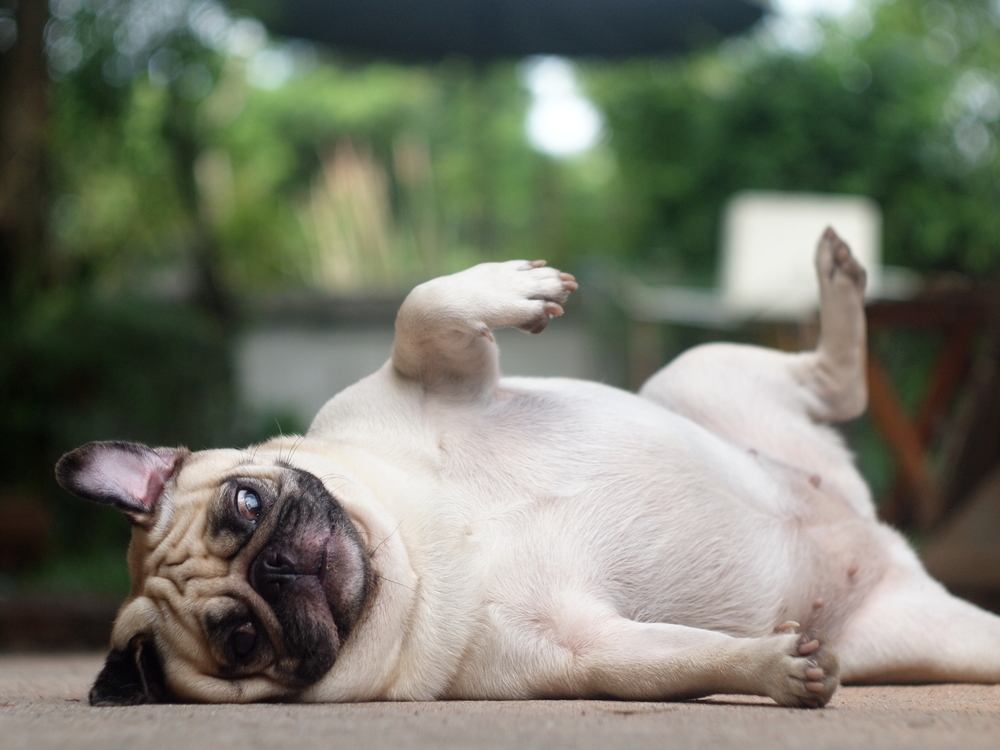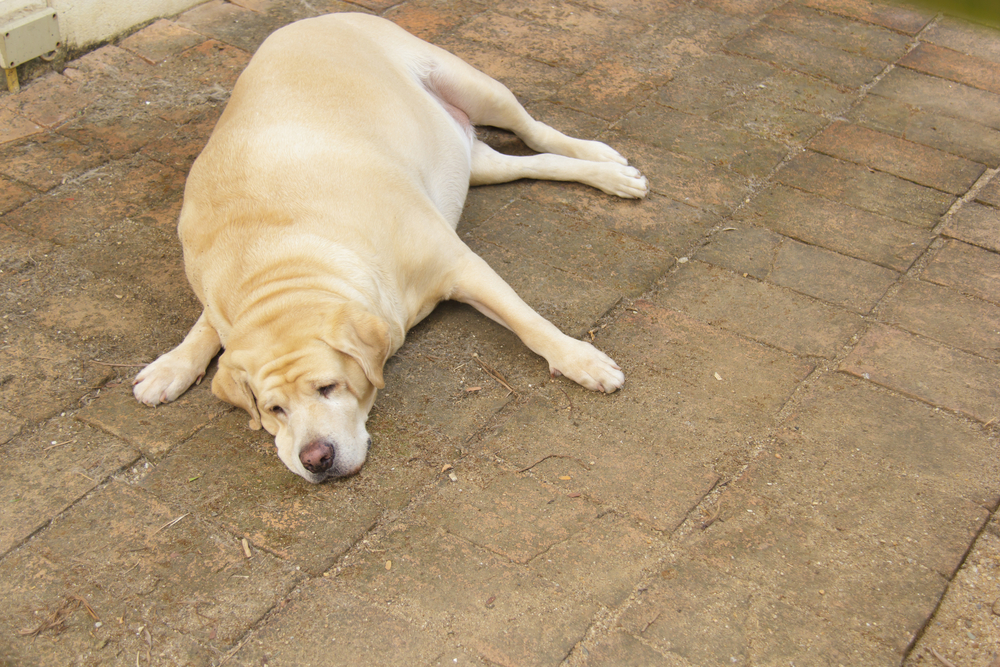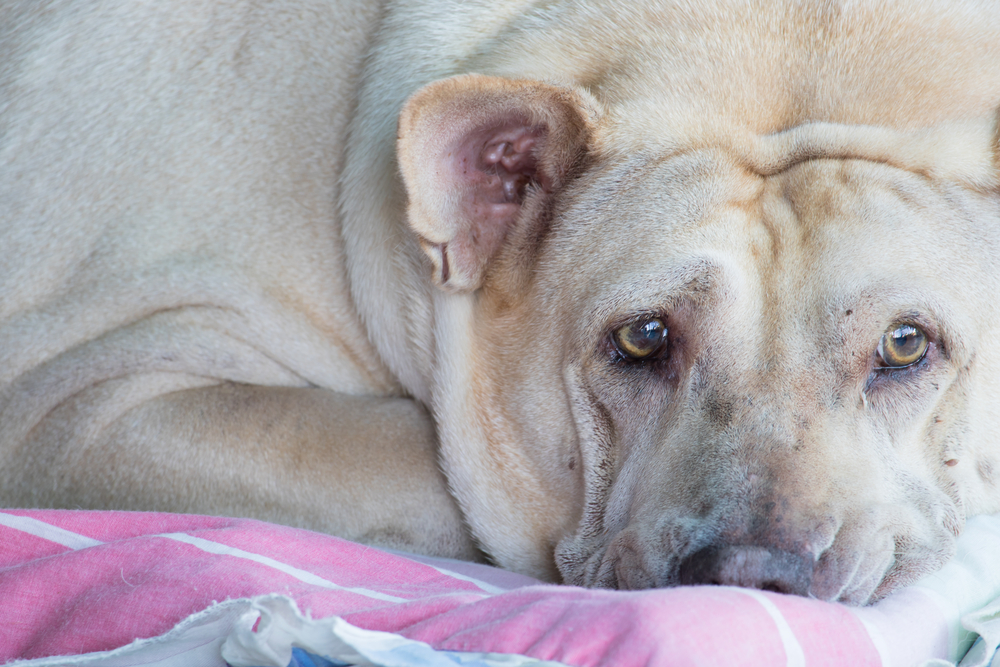Is your pet at risk of becoming obese? Last year, it was estimated that over half of all U.S. pets (cats and dogs) were obese. It’s a growing problem that leads to early death for many beloved fur babies. Sadly, we are loving our pets into an early grave by overfeeding them.
It can be difficult to separate food from love, especially when our dogs believe food is one of the greatest things in the world. But we need to be careful with their diets to ensure they live long, happy lives.

“Pudgy pooches and fat cats are now the norm,” says Dr. Ernie Ward, founder and president of the Association for Pet Obesity Prevention (APOP). “This is the first generation of pets that will not live as long as their parents. Even worse, the majority of today’s overweight pets will endure painful and expensive medical conditions – all of which can be avoided.
This epidemic is needlessly costing pet owners tens of millions of dollars in unnecessary medical bills, not to mention crippling arthritis, challenges of diabetes, and increased risk of cancer these pets endure. We’re loving our pets to an early – and painful – death.” 1
What can we do to change this dangerous trend? The first step toward change is always education. To help end pet obesity, we must be aware of the risk factors. While being mindful of those aspects, trying a customizable fresh dog food brand like Ollie can also help reduce the risk of obesity in dogs. Ollie orders start with a questionnaire to ensure the food is portioned to help your dog reach a healthy weight. Enjoy 60% off your first Ollie order now!
Four Risk Factors of Pet Obesity
- Table Scraps. Many pet parents find it difficult not to feed their dogs when they eat. Sharing a bite of human food here and there, along with frequent meals and snacks can add up, especially if your pup isn’t very active. So, resist the urge to give your pup food every time they beg.
- Breed. Some dog breeds are more prone to obesity. The Labrador Retriever is the most commonly obese dog breed. Labs love to eat and nap, and they’ll easily consume far more calories than their bodies need at every meal if given the chance. Other breeds prone to obesity are Cocker Spaniels, Dachshunds, Rottweilers, Golden Retrievers, Shelties, and Dalmatians.
- Free feeding. Ask just about any dog trainer, and they’ll tell you free feeding your dog is a big no-no. Leaving a bowl full of food out for your dog 24 hours a day allows your dog to eat whenever they’re bored, lonely, stressed, or hungry. Eating feels good, so whenever your dog needs a little comfort, they’ll turn to the food bowl if it’s available. Plus, dogs don’t have very good appetite control. Their instinct is to eat when food is available to stock up on calories for the times when food is scarce. The problem is that today’s domestic house dog never experiences food scarcity, so the pounds just pack on day after day.
- Overfeeding. Even if you feed your dog meals on a set schedule instead of free feeding, the truth is that most pet parents have no idea how many calories per day their dogs should eat. They eyeball a handful of food or guess how much each dog should get each day. And if you have more than one dog, it can be difficult to ensure each dog is eating their own portion and not sneaking from the other dogs’ bowls. Calculate your dog’s daily calorie intake based on their ideal weight for their breed using this formula: Daily calories = Ideal Body Weight in kilograms x 30 + 70. Be sure to measure the food at every mealtime.
How to Help an Overweight Dog
A recent study found that dogs fed to an ideal body condition lived 1.8 years longer than their overweight littermates. Plus, they won’t suffer from problems associated with obesity like:
- Joint problems
- Pain
- Diabetes
- Arthritis
- Heart disease
- High blood pressure
- Difficulty breathing
- Heat intolerance
- Liver dysfunction
- Digestive issues
- Poor immune response
- Increased risk of cancer
If your dog is overweight, they’ll need to eat less and move more. Calculate their daily calorie intake based on their ideal weight and adjust the portion sizes down a little each week until you’ve reached the recommended daily portion size. This will help you and your dog adjust to changes more easily by making gradual adjustments over time.
Ollie makes it easy for you to ensure your dog always gets the right portion by sending you personalized feeding instructions with the food. When filling out your dog’s information, you can add their “ideal” weight onto their profile so that the food will be properly portioned with the exact number of calories based on their weight, breed, age, activity level, and weight goals. Find out how Ollie Fresh Dog Food can help your dog lose weight!

Your pup will also need to move more. This means more walks and more playtime. Consider moving the food bowl upstairs or downstairs so they have to work a little to get their food. Try out a few new toys and offer an extra game of fetch every day. Any movement, no matter how small, helps. Moving more will stimulate your dog’s metabolism and get them on track for a healthier weight.
Special Considerations for Obese Dogs
Some dogs have been overweight for so long, their bodies are in an unfortunate state. Dogs in that situation not only need to lose weight, but they also need to get healthy. Obesity makes it harder to move and breathe, but it also depletes your dog’s body of essential nutrients and decreases the overall function of every organ system. An overweight dog may experience allergies, overheating, hot spots, sleeping problems, incontinence, sickness, and new sensitivities. This is your dog’s body slowly failing to function as nature intended.
Dogs in crisis need medical support from a trained veterinarian.
If you’re currently feeding your dog food that’s packed with fillers, consider switching to a diet with more protein instead to help limit weight gain. Ollie’s Fresh Dog Food is ideal since it’s a balanced meal packed with nutrients. With Ollie, you can create a customized meal plan for your dog to improve their health while helping them lose weight. The food is so appealing to dogs that they won’t realize they’re on a diet.
Change is hard, especially for dogs who love to eat. Learning to say “no” to extra treats and table scraps is difficult, but it’s in your dog’s best interest. Remember, healthy dogs live longer, happier lives.
To recap:
- Feed your dog on a schedule (don’t free feed)
- Don’t share your meals and snacks with your dog
- Know how much food your dog should get and measure their meals
- Look for foods packed with meat, such as Ollie
- Get your dog to move more
Ready to give your dog a fresh start? Give your dog the gift of Ollie Fresh Dog food, and get 60% off your first box!
 1 Source: Mercola
1 Source: Mercola



 Toledo, United States.
Toledo, United States.
